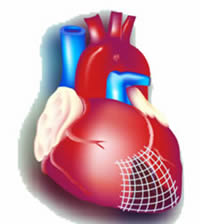In 1980, Democrats passed the Bayh-Dole Act and it reversed long-standing policy that if a discovery was made using taxpayer-funding, it could not be privately monetized. It became possible for scientists who did applied work to start a company or sell a patent so a corporation even if the American people had paid for it.
Yet few schools avail themselves of it despite it being all reward and no risk; only two percent of taxpayer-funded scholars have 10 or more patents. The reason may be that science groups who think basic research is ethically superior to end products may shun the engineering needed to turn research into action. A new study finds that schools with both strong applied science and strong engineering are mostly likely to conduct work that may have public benefit.

The authors created a database that linked utility patents and money in with NIH funding, so the criteria were the years 2009 to 2019, $40 million in NIH funding, and at least 15 utility patents. They examined the “Government Interest” section of patents that mandates inclusion of federal support, such as NIH grants, and then created a metric, the Translational Ratio, by dividing the total of that funding, including the school's overhead, by the number of issued patents.
The lower the number, the lower the cost per patent.
They found that the cost per patent was lower at institutions with lower funding yet facilities and administrative costs mattered little. Among the 134 institutions, low- and high-costs group rates ranged from 42.6 percent to a high of 89.5 percent. Clearly, institutions with higher tuitions (and thus more student loans generated) used that money to pay scholars who could generate more grants - but those grants did not translate to more patents even as they increased the average cost.
Engineering matters a lot - but academic culture wants publication, not patents
The 114 institutions with engineering/applied science were collated based on engineering-department funding. The per-patent costs averaged $15.5 million among those with average funding of $84 million and $11.9 million per patent in the group with average funding of $575 million. Stronger engineering departments created clusters of super-producers and those super-producers, though only 2 percent of scientists, accounted for 50 percent of patents.
The uptake of the patent may not be higher because academic scholars often regard private-sector scientists as greedier, even while the difference between academic and private sector salaries has narrowed substantially. It may also be that some schools do more observational studies - no food survey result has any meaning outside creating a new diet book craze or chemophobia scare and mouse and worm studies are also only in the exploratory pile.
The government has switched gears and expressed interest in applied science again, but unfortunately they are using the same legacy mechanisms that have led to so much waste in the past; DARPA. The DARPA for Health (DARPA-H) program is getting $1 billion but historically DARPA funds well-known academics with strong ties to industry, not revolutionary breakthroughs. As was shown in the COVID-19 pandemic, solutions may be readily available but government panels are not giving them money; one of the lead scientists behind the mRNA vaccines technology never get to run her own lab. Government panels didn't think her work had any value.



Comments